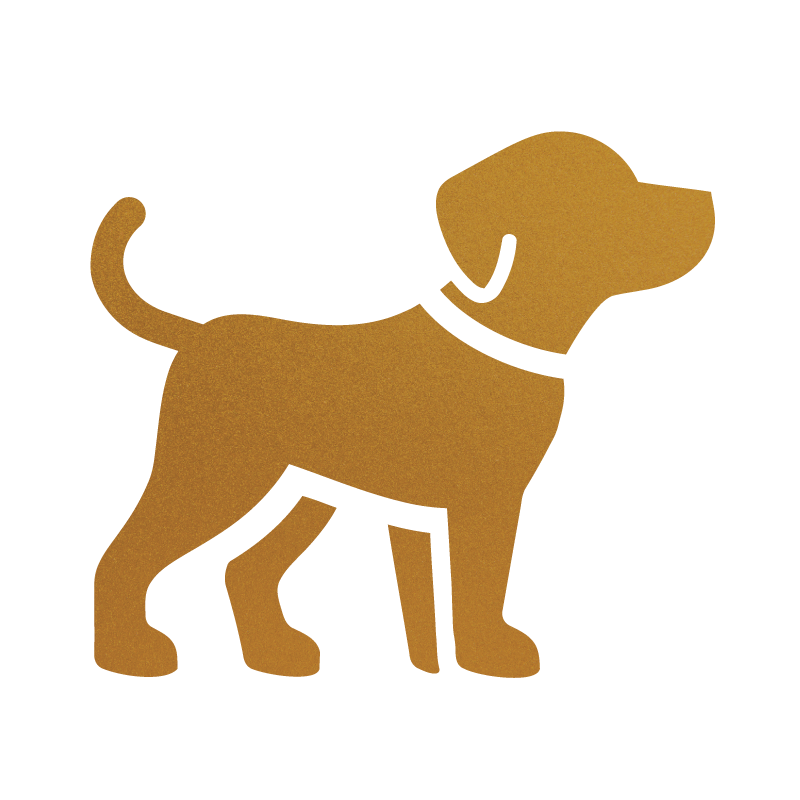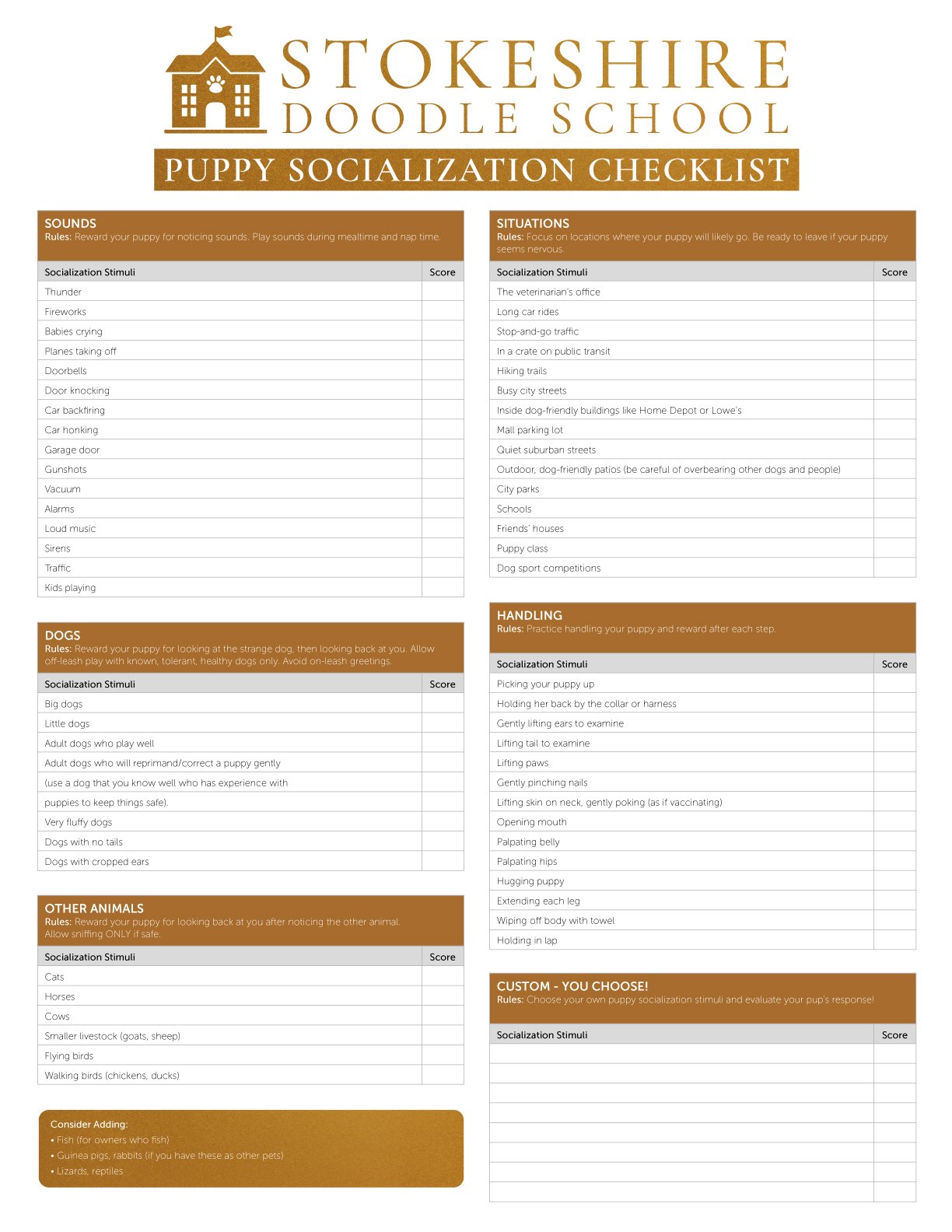Behavior and Socialization Plan for puppies
Puppies are just like young children and will require patience, understanding, and consistency from their owners. It is important to establish rules and boundaries for your puppy from the start to help them learn what is expected of them and to prevent problem behaviors from developing. Here are some general behavior expectations for puppies:
Potty training: It is important to start training your puppy to go to the bathroom outside as soon as you bring them home. Be consistent with taking them outside to go potty and praise them when they do their business in the right place.
Chewing: Puppies are naturally curious and will want to explore their environment with their mouths. It is important to provide plenty of safe chew toys for them to play with and to supervise them to ensure they do not chew on inappropriate items.
Barking: Barking is a natural form of communication for dogs and puppies may bark for attention, out of fear or anxiety, or to alert you to something. It is important to teach your puppy to bark only when necessary and to be quiet on command.
Jumping: Puppies may jump up on people as a way to greet them or to get attention. It is important to teach your puppy that jumping up on people is not acceptable behavior.
Biting: Puppies may playfully bite or chew on hands and feet as a way to play or explore their environment. It is important to teach your puppy that biting is not acceptable and to redirect their biting onto appropriate chew toys.
Stokeshire Doodle Puppy Curriculum
A puppy curriculum is a program or set of guidelines that provide a structure for training and socializing a puppy. It is typically designed to help puppies learn appropriate behaviors, build confidence, and become well-adjusted members of their families and communities. A puppy curriculum might include a variety of activities such as obedience training, socialization with people and other animals, and exposure to different environments and situations. It is important to start training and socializing puppies at an early age, as this can help them grow into well-behaved and confident dogs.
At Stokeshire our ENS/ESI starts on day 3 after birth. Early neurological stimulation is a set of exercises that are designed to stimulate the nervous system of puppies during the critical period of development between the ages of 3 and 16 days old. These exercises have been shown to have a positive impact on the physical and behavioral development of puppies. Some examples of early neurological stimulation exercises include:
Holding the puppy in different positions (on its back, on its side, etc.)
Gently stimulating the puppy's paws and chest
Providing brief, intermittent changes in temperature (e.g., wetting the puppy's feet and drying them off)
Providing mild stressors such as gentle restraint and exposure to unfamiliar sights, sounds, and surfaces
20-Step Puppy Handling Exercises
The 10-Step Puppy Handling Exercises are a series of handling techniques that are designed to help puppies become accustomed to being handled by humans. These exercises are often used in puppy socialization classes or as part of a training program. Here are the 10 steps:
Rub & Gently Tug on Ears
After their Eyes are open, cover their eyes for 3-5 seconds
Open their mouth, inspect their teeth and place your finger inside their mouth. You can rub their tongue and gums. Check for tooth eruption.
Rub the puppy’s belly and chest in a wide circular motion.
Offer Heavy petting ruffling their fur.
Gently lift the puppy by the scruff of the neck.
Gently tug and twist on their tail.
Take a Q-tip of your finger and rub it in between all the pads on their paws to simulate grooming.
Tap on the tip of their toe-nails to simulate nail trimming
Put your hand on their collar and apply a slight tug or pressure
Gently touch their nose.
Hold the puppy in your arms with its head facing forward.
Hold the puppy on its back in your arms.
Gently grasp the puppy's paws and hold them up.
Hold the puppy's front foot and gently lift it off the ground.
Hold the puppy's hind feet and gently lift it off the ground.
Gently open the puppy's mouth and look inside.
Gently touch the puppy's ears and tail.
Hold the puppy in your arms and gently rock it back and forth.
Place the puppy on a table and gently examine its body.
Dams Extended stay through 6.5 Weeks
Socialization and Behavioral Development: During the early weeks, puppies learn crucial social skills from their mother. They observe her behavior, learn boundaries, and understand communication through interactions, setting the foundation for their own behavior with other dogs later on.
Emotional Stability: Being with their mother provides a sense of security and comfort for the puppies. This stability aids in emotional development, reducing stress and anxiety, which can impact their long-term well-being.
Nutritional Support: The dam's milk provides essential nutrients crucial for the puppies' growth and immune system development. Extended time with the mother ensures they receive adequate nutrition during this critical growth phase.
Teaching Limits and Manners: The mother dog naturally teaches her pup’s limits, manners, and bite inhibition through gentle corrections. This education is invaluable in shaping their behavior and preventing future issues.
Immune System Boost: Puppies initially rely on their mother's milk for antibodies that bolster their immune system. This passive immunity is vital until their own immune systems mature.
In essence, the extended presence of the dam supports holistic development, encompassing physical health, emotional stability, social skills, and behavioral patterns, setting the stage for well-adjusted and healthy adult dogs. These things are paramount for our puppies at Stokeshire.



